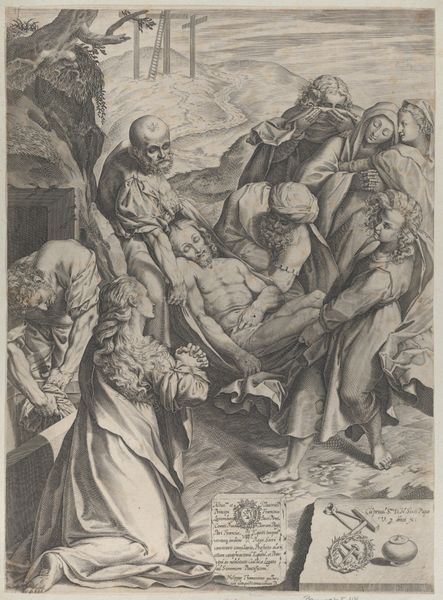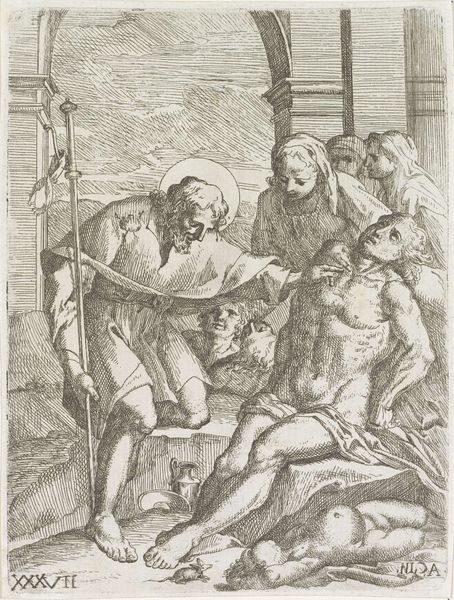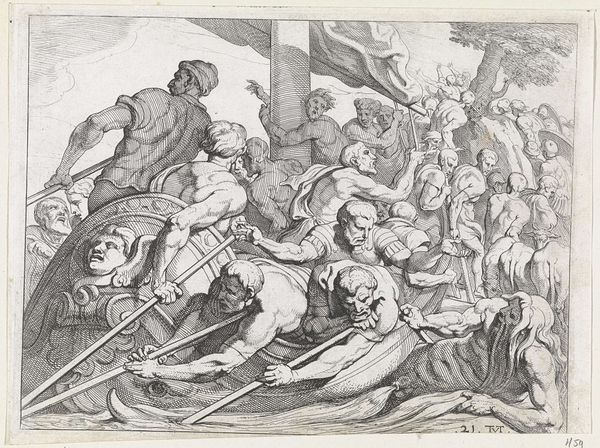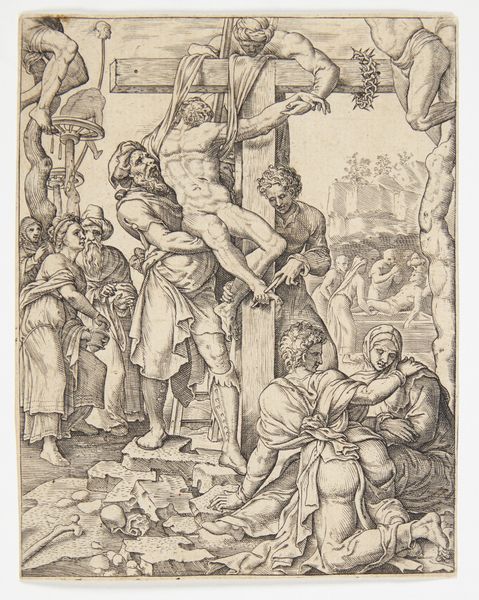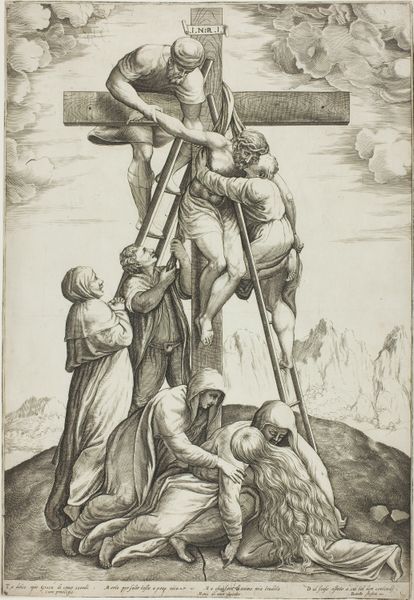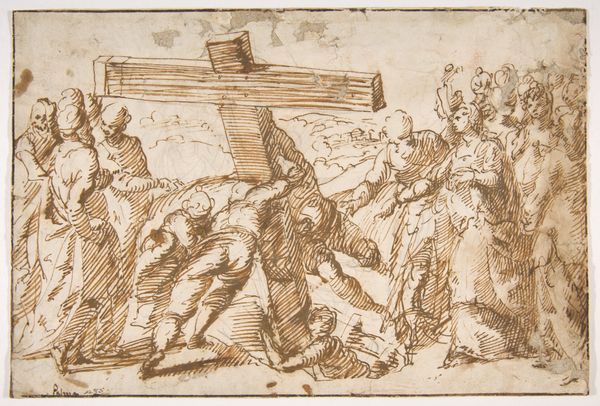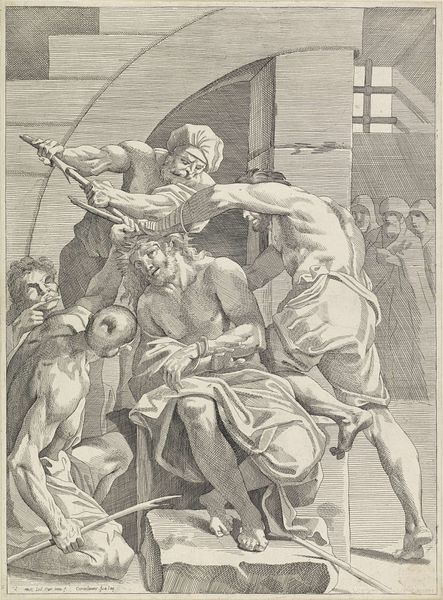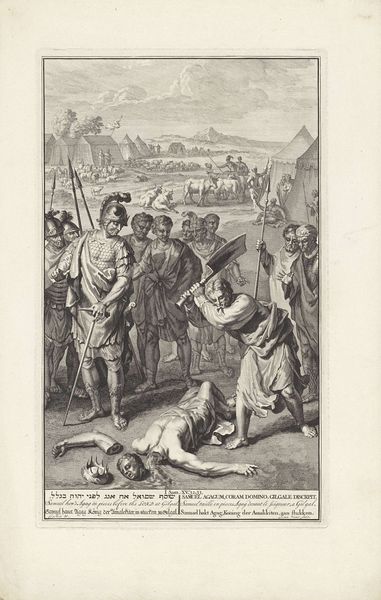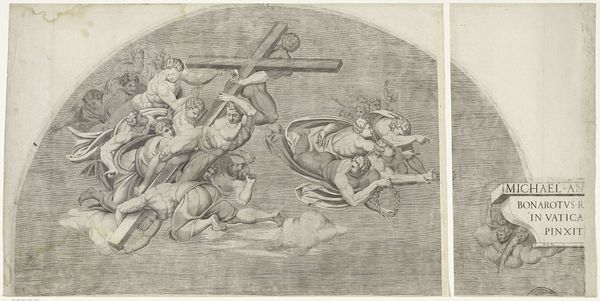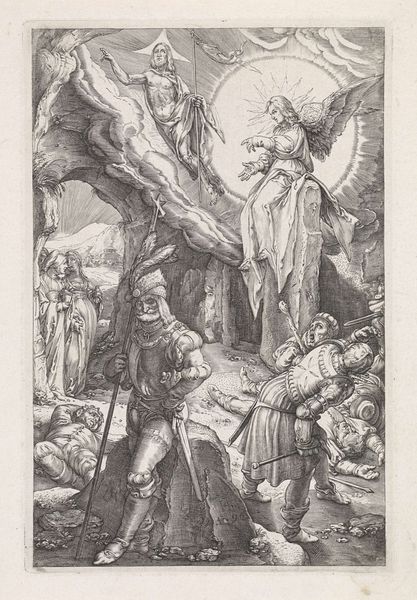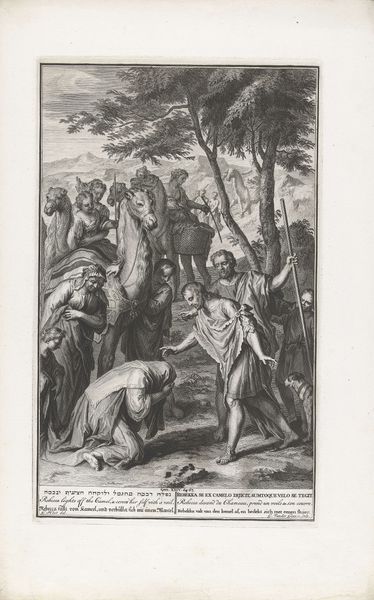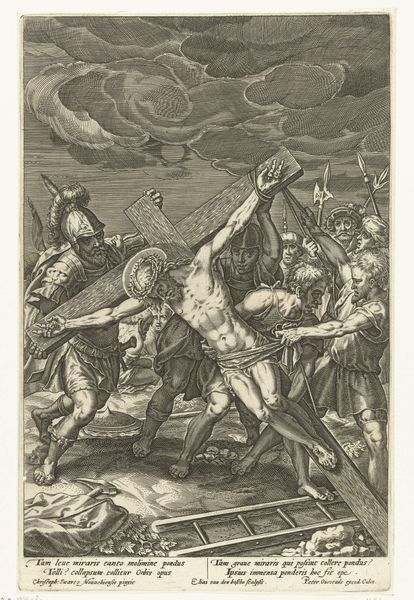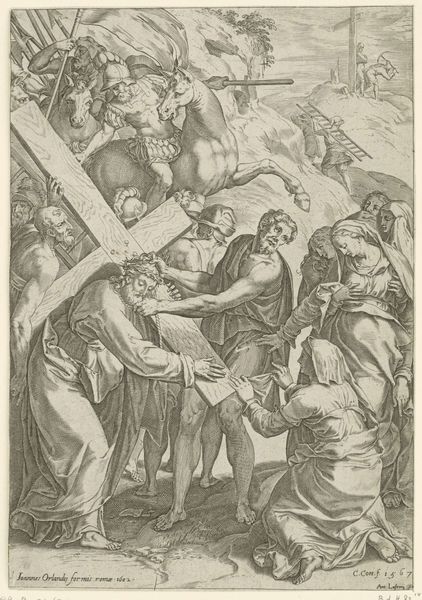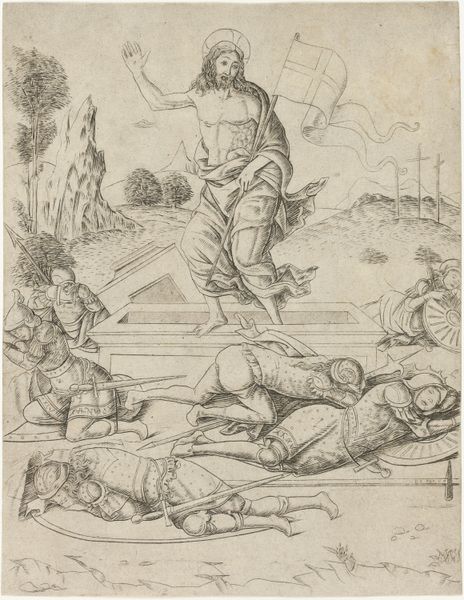
drawing, paper, ink, pen
#
drawing
#
narrative-art
#
baroque
#
pencil sketch
#
figuration
#
paper
#
ink
#
pen
#
genre-painting
#
history-painting
Dimensions: height 202 mm, width 161 mm
Copyright: Rijks Museum: Open Domain
Curator: Here we have Moses ter Borch’s “Kruisdraging,” created between 1661 and 1662. It's a drawing executed with pen and ink on paper. Editor: My first impression is one of powerful emotion, amplified by the contrast between the crisp lines and the softer, blurred figures in the background. It's as if we're peering through a mist of collective grief. Curator: Precisely. Ter Borch uses the interplay of light and shadow, created by the ink washes, to direct our focus. Note how Christ and the embracing figures are rendered with far greater detail compared to the peripheral subjects. It serves to accentuate their emotional presence. Editor: And how do you interpret the social dynamic illustrated here? Considering, of course, that during the 17th century, depictions of Biblical scenes were deeply entwined with the socio-political climate. Curator: One sees how this intimate scene humanizes a religious narrative that, especially in baroque art, had a penchant for grandeur. It seems the artist offers a compassionate viewpoint, focusing on the personal suffering amid wider historical drama. Editor: The presence of the children adds another dimension. They’re not mere onlookers; they are active participants, seemingly trying to pull at their mother, perhaps overwhelmed by the atmosphere. It evokes this emotional tension to draw on its public perception, but simultaneously serves as intimate social commentary. Curator: Consider also, the stylistic elements aligning this with Baroque conventions. The composition spirals dynamically, moving from Christ to the mourning family and back, creating movement, a key trait of that period's artworks. Editor: It's a moving testament, capturing human suffering within an instantly recognizable framework. These figures of family juxtapose powerfully against the wider socio-political reality, don’t they? Curator: It really emphasizes the importance of this work’s semiotic construction of familial intimacy to heighten empathy and the recognition that tragedy can impact the smallest, most private sphere. Editor: Agreed, by considering the elements within their formal and historic frameworks, the artist successfully captured not just the imagery of Christ's Passion but the all-encompassing reality of its effects upon human experience.
Comments
No comments
Be the first to comment and join the conversation on the ultimate creative platform.
